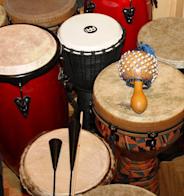Search results
Events
- JUL27
 MusicWilliamsburg Salsa Orchestra Featuring Solange PratBlue Note Jazz Club1:00 PMJUL27MusicThe Music of Phish for Kids + MoreGarcia's at The Capitol Theater2:00 PM
MusicWilliamsburg Salsa Orchestra Featuring Solange PratBlue Note Jazz Club1:00 PMJUL27MusicThe Music of Phish for Kids + MoreGarcia's at The Capitol Theater2:00 PM - JUL27
 MusicPiano People in the Park With Scorpion Kings, Kelvin Momo + MoreCapital One City Parks Foundation SummerStage3:00 PMJUL27
MusicPiano People in the Park With Scorpion Kings, Kelvin Momo + MoreCapital One City Parks Foundation SummerStage3:00 PMJUL27 Arts & TheatreLaughing Buddha Open Mic SpectacularEastVille Comedy Club - Brooklyn4:00 PM
Arts & TheatreLaughing Buddha Open Mic SpectacularEastVille Comedy Club - Brooklyn4:00 PM - JUL27SportsFC Series: Manchester City V AC MilanYankee Stadium6:00 PMJUL27
 Arts & TheatreSaturday Night Live!, Featuring Nyc's Best ComediansEastVille Comedy Club - Brooklyn6:00 PM
Arts & TheatreSaturday Night Live!, Featuring Nyc's Best ComediansEastVille Comedy Club - Brooklyn6:00 PM
New York City is the most populous city in the United States, with 8,804,190 residents as of the 2020 United States census, its highest decennial count ever, incorporating more immigration into the city than outmigration since the 2010 census.
Jun 7, 2024 · 34 Best Things to Do in NYC. By Jessica Colley Clarke. |. Reviewed by Ann Henson. |. Last updated on Jun. 7, 2024. There are countless reasons to be mesmerized by New York, from its skyscrapers...
Jul 7, 2024 · 50 best things to do in New York City: Manhattan, Queens, Brooklyn, the Bronx, Staten Island. Best free things to do & things to do with kids.
Jul 21, 1998 · New York City, city and port located at the mouth of the Hudson River, southeastern New York state, considered the most influential American metropolis and the country’s financial and cultural center. New York City comprises five boroughs—Manhattan, Brooklyn, the Bronx, Queens, and Staten Island.
Experience the five boroughs of New York City with NYC Tourism. Find out what to do, where to go, where to stay, and what to eat in NYC from NYC's official guide.
Jul 26, 1999 · New York, constituent state of the U.S., one of the 13 original colonies and states. Its capital is Albany and its largest city is New York City, the cultural and financial center of American life. Until the 1960s New York was the country’s leading state in nearly all population, cultural, and economic indexes.
Jun 7, 2022 · With one of the world’s most easily recognizable skylines and ranking as the most populous city in the United States, New York City is a hub of diversity, culture, and innovation. Nicknamed the Empire State , the city comprises five boroughs that each maintains its own distinctive style and flavor.











































